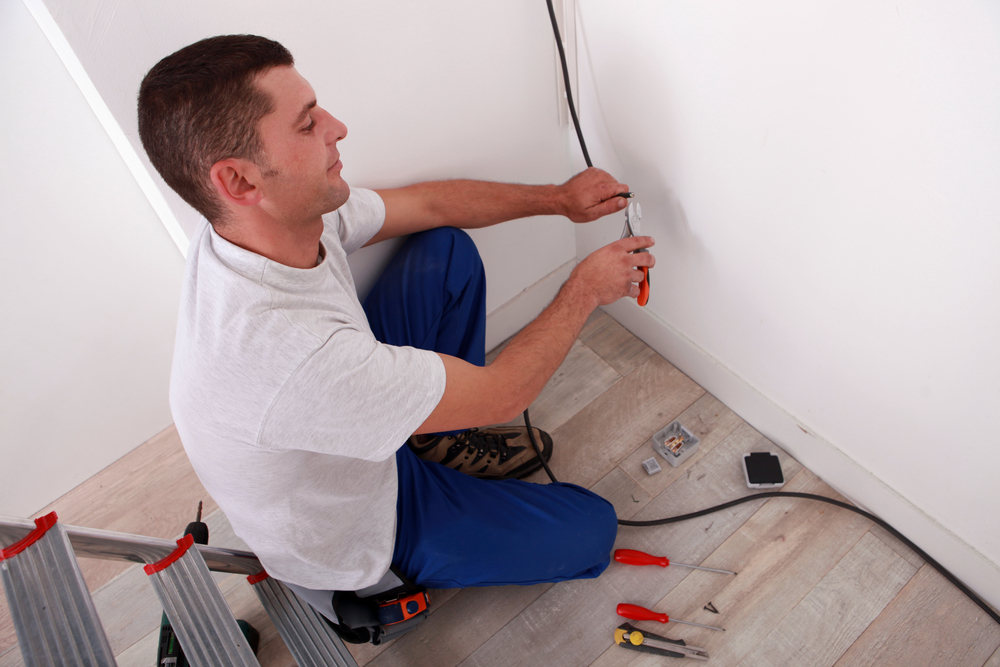Replacing knob & tube wiring is a once-in-a-lifetime experience. Although it might not be very thrilling, it’s something you will never have to do again. There’s more good news. An old house with knob & tube present would be outdated in general. You need more outlets, outlets in safe locations, and the entire wiring system to be up to code in every way. Updating old K&T gives you the chance to take care of everything at once.
Why You Have to Replace Knob & Tube

Ironically, the actual ceramic knobs and tubes are probably in great shape. The wiring itself may be degraded, however. Even if everything is in good working order, a knob & tube system is too old to supply the amount of power modern households need.
The five big reasons to replace electrical wiring when you’ve found K&T are:
- Age: Knob-and-tube systems became obsolete almost a century ago, so wear and tear has built up. Worn, cloth insulation provides no safety at this age. Frayed, burned, or damaged wires are likely.
- Fire hazards: Overloaded circuits get overheated easily. Insulation and remodeling work might have buried and covered wiring dangerously as well.
- Ungrounded: The wiring cannot support three-prong appliances. Any three-prong outlets are not actually grounded.
- Dangerous alterations: Any electrical work performed since the 1940s might have unsafely combined parts made for other kinds of wiring. As power demand has increased, former homeowners and their handymen might have jury-rigged dangerous methods of increasing power beyond the old knob & tube wiring capacity.
- Insurance and inspections: Homeowner’s insurance companies can refuse to cover a house with antique wiring. Inspectors will (rightfully) scare off future home buyers if they find it.
What Does Knob & Tube Wiring Look Like?
Looking behind outlets and light switches might not reveal knob & tube wiring. It’s most easily spotted in attics and basements or wherever stretches of wiring can be seen.
You’d see white porcelain knobs and tubes that connect and redirect wires throughout the house. The knobs are attached to studs and found when the wiring takes a turn or as a support system for a long stretch of wire. The tubes are seen wherever wiring passes through wooden framework.
The wiring used in these systems usually has old insulation made of cloth that was coated with varnish, rubber, or asphalt. Just because wiring looks like it has dusty, disintegrating insulators does not mean you have knob & tube wiring. It could be aluminum wiring or simply old copper wiring, so poke around and look for the knobs and tubes.
Knob & Tube Wiring in Historic Homes
The National Electrical Code does not explicitly require that knob-and-tube systems be removed and replaced. It’s possible to replace the wiring where necessary but disconnect and leave wiring alone if it would disturb a historic home.
Replacing knob & tube electrical typically requires that a number of holes be made in the walls and ceiling. Work with a reputable and experienced residential electrician to ensure the process is efficient and clean.
Look for Other Old Electrical Problems
A routine home inspection can miss knob & tube wiring, so it’s worth wondering whether you have other electrical repairs to make. Specifically, a vintage home with the original wiring probably has at least some of these issues:
- Wrong size breaker switches
- Outlets near water
- Too few outlets in each room
- Junction boxes buried in insulation
- Improperly spliced wires
Need an electrician to verify whether you have knob & tube wiring? Contact us for an electrical inspection and free estimate for rewiring your home.

